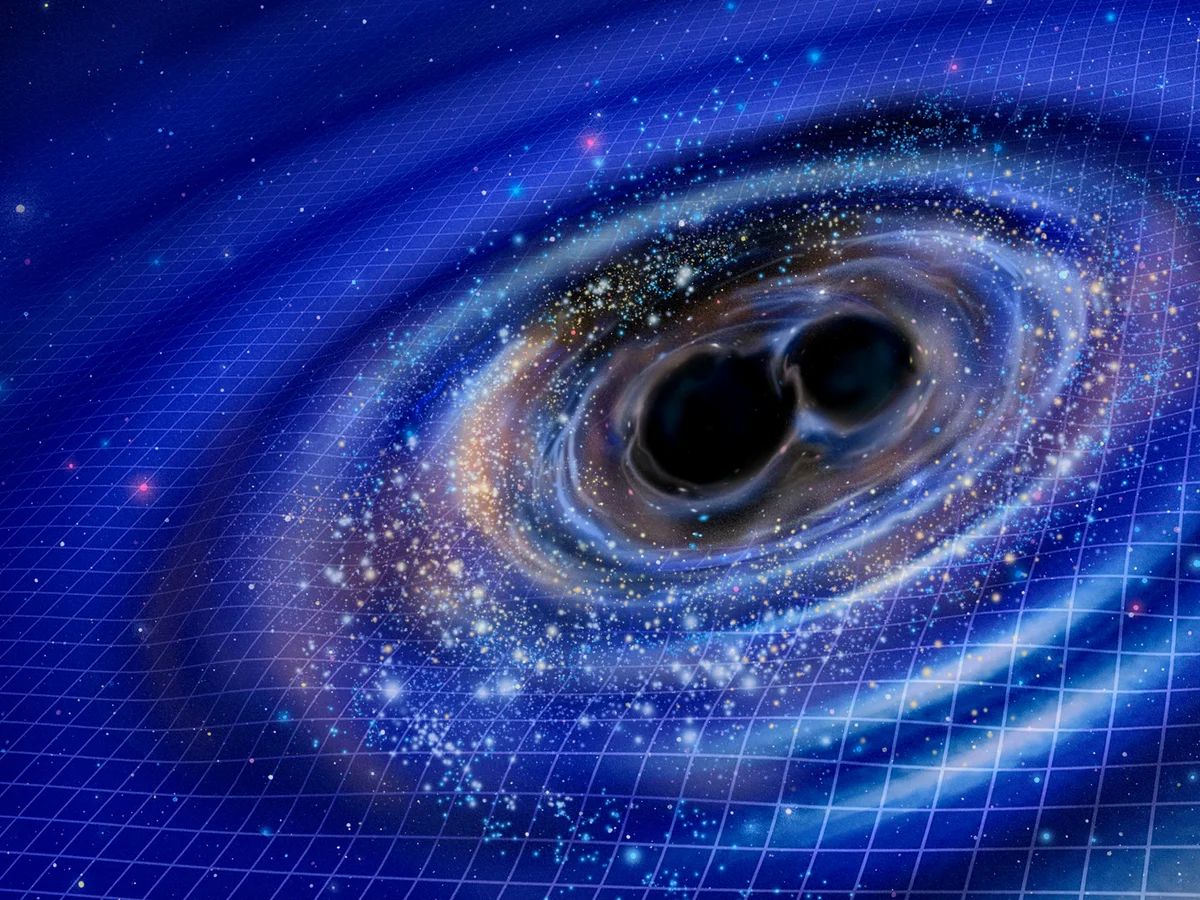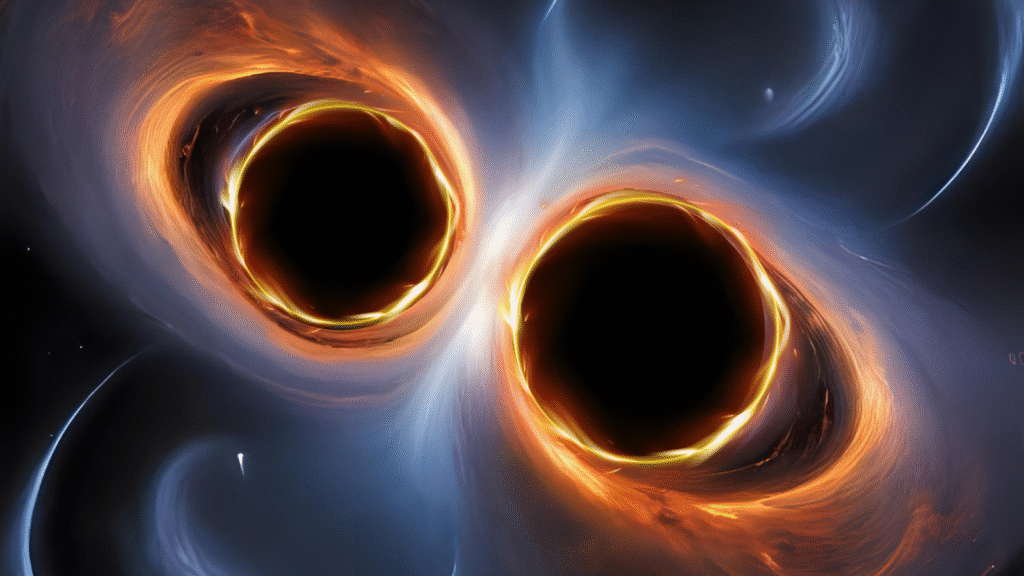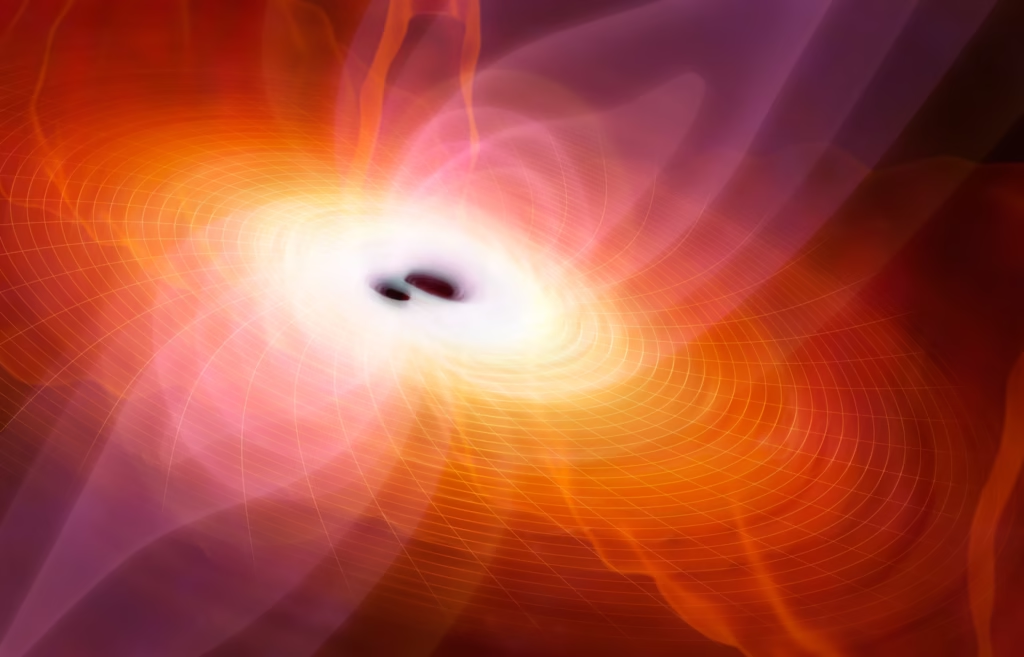When Giants Collide: The Unexpected Black Hole Merger That Challenged Scientific Theory

In a discovery that sent ripples through the fabric of astrophysics, scientists have recorded a black hole collision they weren’t sure was even possible. The event, captured through gravitational wave detectors in 2019 and later confirmed with further analysis, revealed the merger of two black holes of dramatically different sizes—a phenomenon long thought to be unlikely, if not impossible. This groundbreaking observation has forced astronomers to rethink the rules of black hole formation, evolution, and behavior in the universe.
The Unlikely Collision: GW190412
The event is officially known as GW190412, named after the date it was detected: April 12, 2019. It was recorded by the LIGO (Laser Interferometer Gravitational-Wave Observatory) in the U.S. and Virgo in Italy.
What made this collision so unique and surprising was that the two black holes involved were vastly different in mass:
- One had a mass about 30 times that of the Sun.
- The other was roughly 8 solar masses.
Until this event, all recorded black hole mergers involved pairs of nearly equal mass, because theoretical models had suggested that asymmetric binary systems would either be unstable or unlikely to form. The mass ratio of GW190412 was around 4:1, and yet, the black holes not only merged but did so in a way that produced detectable gravitational waves.
Why This Collision Was “Impossible”
There are several reasons why scientists previously thought such a merger was unlikely:
- Stellar Formation Models:
- Black holes typically form from the collapse of massive stars.
- In binary systems, stars tend to equalize in mass due to mass transfer during their lifetimes.
- Therefore, their eventual black hole remnants should also be similar in size.
- Orbital Dynamics:
- A significantly smaller black hole is more likely to be flung out of the system rather than spiraling in to merge.
- The orbital decay leading to merger is less efficient in asymmetric systems.
- Detection Bias:
- Gravitational wave detectors are more sensitive to equal-mass mergers, meaning uneven pairs might have gone undetected until now.

What Scientists Learned
This collision opened new doors in astrophysics by providing answers—and new questions—about the universe:
- Spin Detection:
The asymmetry allowed scientists to measure the spin of the larger black hole, giving insights into its past formation. - Waveform Clarity:
The gravitational wave signal was more complex than those from equal-mass binaries. It revealed subtle details that allowed more precise modeling. - Black Hole Populations:
The event suggested that asymmetric mergers are more common than thought, prompting a revision of current population models. - Black Hole Environments:
It raised the possibility that the black holes could have formed in dense stellar clusters or accretion disks around supermassive black holes, environments where gravitational interactions might bring together very different black holes.
The Role of Gravitational Waves
Gravitational waves are ripples in spacetime first predicted by Einstein’s theory of general relativity. Since LIGO’s first detection in 2015, they have become a revolutionary tool in astronomy, enabling scientists to study celestial events that are invisible to telescopes.
GW190412 was among the first events where gravitational wave analysis provided high-fidelity data about:
- Mass and spin of the black holes
- The distance and energy of the event
- The direction of the collision in space
This helped astrophysicists understand how black holes interact, and how many different kinds of pairings might exist in the cosmos.
Implications for the Future
The observation of this unusual black hole merger marks a turning point in astrophysics:
- Model Revisions:
Theories of stellar evolution and black hole formation are being updated to account for greater mass asymmetry in mergers. - New Search Parameters:
Gravitational wave observatories are now tuned to spot less “typical” mergers, which could reveal even stranger pairings. - Origins of Intermediate Mass Black Holes:
Some scientists speculate that repeated mergers of unequal pairs might lead to the formation of intermediate-mass black holes, a class that has been elusive and is key to understanding galactic evolution. - Universal Black Hole Diversity:
The idea that black holes only form and merge in symmetric, predictable ways is being replaced by a more chaotic, dynamic picture of the universe.

Conclusion
The collision of two black holes with vastly different masses, once thought improbable, has rewritten our understanding of the cosmos. As gravitational wave astronomy continues to evolve, it will likely uncover more of these rare and powerful events—each one challenging assumptions, expanding our knowledge, and deepening our sense of cosmic wonder. GW190412 isn’t just a data point—it’s a cosmic revelation that reminds us how much we have yet to learn about the dark and dynamic heart of the universe.




